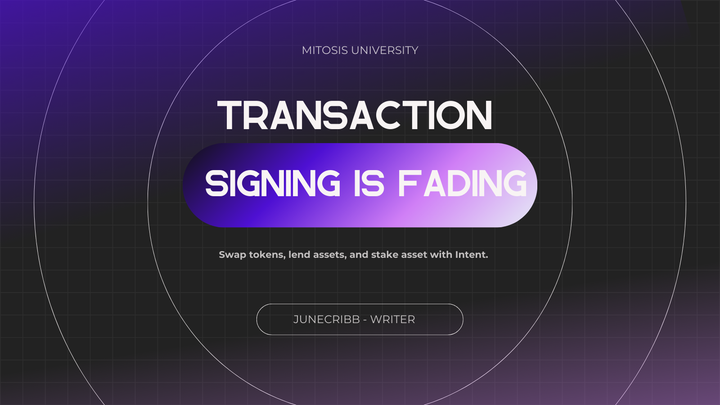🔍 SUCCINCT SP1 ZKVM: MAKING ZERO-KNOWLEDGE PROOFS ACCESSIBLE TO RUST DEVELOPERS

Zero-Knowledge Proofs (ZKPs) represent a cryptographic breakthrough, allowing one party to prove the truth of a statement to another without revealing any underlying information beyond the statement's truth itself. This technology has immense potential for enhancing privacy, security, and scalability in blockchain and beyond. However, harnessing the power of ZKPs has traditionally been complex, requiring deep cryptographic expertise and often involving specialized, difficult-to-learn programming languages or tools. This complexity has been a significant barrier, especially for developers working in established ecosystems like Rust.
Enter SUCCINCT'S SP1, an open-source, performant Zero-Knowledge Virtual Machine (zkVM) designed to bridge this gap. SP1 aims to make the power of ZKPs accessible to the vast community of Rust developers by simplifying the process of creating verifiable computations.
🤖 WHAT IS THE SP1 ZKVM?
At its core, SP1 is a system that can prove the correct execution of programs compiled to the standard RISC-V instruction set architecture (ISA). Since Rust code can be readily compiled into RISC-V, SP1 effectively allows developers to write programs in standard Rust and generate ZK proofs attesting to their correct execution.
It utilizes performant cryptographic techniques like STARKs (Scalable Transparent Arguments of Knowledge) to generate proofs. Designed with modularity and available as open-source software, SP1 enables optimizations and integration into broader frameworks like the Verifiable Applications (vApps) concept, aiming for a transparent and adaptable approach to verifiable computing.
🧑💻 FROM CODE TO PROOF: A DEVELOPER WORKFLOW IN SP1
The conceptual workflow for using SP1 might look like this:
- ✍️ Write a Rust Program: The developer writes application logic in familiar Rust code.
- 🛠️ Compile to RISC-V: The code is compiled into RISC-V, a standard instruction set SP1 understands.
- 🧠 Run Inside SP1: The compiled program is executed inside the SP1 zkVM.
- 🔐 Generate a ZK Proof: SP1 tracks this execution and produces a proof that confirms the computation was done correctly.
- ✅ Verify the Proof: This proof can then be verified by anyone, without redoing the original computation.
This process abstracts away the cryptographic complexity, allowing developers to focus on writing functional applications while SP1 ensures that the logic can be independently verified.

🦀 HOW SP1 EMPOWERS RUST DEVELOPERS
SP1 tackles the ZKP accessibility challenge for Rust developers in several key ways:
🔧 NATIVE RUST DEVELOPMENT: This is perhaps the most significant advantage. Developers don't need to learn a new, ZK-specific language. They can leverage their existing Rust skills, tools, and the rich ecosystem of Rust crates to build the logic they want to prove. The focus shifts from wrestling with cryptographic primitives to building application features.
🧰 ABSTRACTION OF CRYPTOGRAPHIC COMPLEXITY: SP1 handles the intricate process of generating STARK proofs based on the program's execution trace. While the underlying cryptography is complex, developers interact with it at a higher level. Conceptually, a developer would write their core logic in a Rust function, define necessary inputs and outputs, and then utilize SP1 tooling (or an SDK built upon it, like the vApp SDK described in the paper) to compile the Rust code to RISC-V, execute it within the zkVM, generate the proof, and potentially verify it. This abstraction, similar to using macros in the vApp framework, hides much of the proof system's complexity.
⚙️ STANDARD COMPILATION WORKFLOW: The process aims for simplicity: write Rust code, compile it to RISC-V using standard tools, and then use SP1 to execute the RISC-V binary and generate a proof of that execution. This fits naturally into existing development workflows.
🚀 HIGH PERFORMANCE WITHOUT DEEP ZK TUNING: SP1 is engineered for performance. Developers benefit from optimizations without needing to become experts in ZK circuit design:
- ⚡ Native Execution Efficiency: By executing compiled RISC-V directly, SP1 avoids the significant performance penalties associated with interpreting bytecode from systems like the EVM within a ZK environment. Benchmarks using SP1 showed that EVM interpretation could impose overhead up to 832x compared to running native Rust code for the same task.
- 📦 Precompile Acceleration: SP1 incorporates specialized circuits ("precompiles") for common, heavy computations like cryptographic operations (e.g., elliptic curve pairings needed for Plonk/Groth16 verification, KZG proofs). These precompiles can dramatically reduce the proving cost (cycle count) for specific tasks – the paper highlights SP1 precompiles achieving over 95% improvement for certain verification tasks.
🛡️ SECURITY AND TRUST CONSIDERATIONS
Security is paramount in ZK systems. SP1's approach aligns with key security pillars discussed for zkVMs in the vApps paper:
- 🔐 Soundness and Completeness: The underlying proof system (STARKs) must mathematically guarantee that only correct computations can produce valid proofs (soundness) and that all correct computations can be proven (completeness). STARKs offer transparency here as they generally don't require a trusted setup ceremony, unlike some SNARK variants.
- 🧪 Implementation Correctness: Bugs in the zkVM's compiler, runtime, or prover could undermine security. SP1 being open-source allows for community audits and scrutiny, increasing confidence in the implementation's correctness over time.
- 🧩 Modularity: A modular architecture, as employed by modern zkVMs, makes it easier to update or patch components and potentially integrate additional security layers if needed.
⚙️ PERFORMANCE OPTIMIZATION AND ECOSYSTEM CONTEXT
SP1's design enables further performance gains through techniques like:
- 🧱 Parallelization (Sharding & Recursion): Breaking down large computations into smaller parts ("shards") proven in parallel, then efficiently combining these individual proofs ("recursion") into a single, final proof. This is crucial for handling complex programs and can significantly reduce proof size (e.g., compressing proofs from hundreds of MBs to ~1.5MB as shown in SP1 benchmarks) and latency.
- 🖥️ Hardware Acceleration: Leveraging GPUs to significantly boost proof generation throughput, making ZK proving faster and more cost-effective. SP1 benchmarks showed GPU acceleration increasing throughput dramatically compared to CPU proving.
- 📉 STARKs vs. SNARKs: SP1 primarily generates STARK proofs, known for their transparency (no trusted setup) but potentially larger size. These proofs can often be recursively compressed into a final succinct proof, potentially using SNARK schemes like Plonk or Groth16. These SNARKs offer smaller proof sizes and potentially cheaper on-chain verification but may require a trusted setup for their parameters.
📊 COMPARING SP1 WITH OTHER ZKVMS
To better appreciate SP1's advantages, it's helpful to see how it compares to other prominent zkVMs in the ecosystem. The table below highlights some key differences:
| zkVM | Proof System | Language Support | Trusted Setup | Proof Size | Performance | Open Source | Adoption Examples |
|---|---|---|---|---|---|---|---|
| SP1 | STARKs | Rust (via RISC-V) | No | Medium | High | Yes | Mantle, Blobstream, Vector |
| RiscZero | STARKs | Rust (custom toolchain) | No | Medium | Medium | Yes | Zeth, Bonsai |
| Jolt | STARKs | Rust (via custom VM) | No | Medium | High | Yes | Academic and early-stage experiments |
⚠️ LIMITATIONS AND CONSIDERATIONS
While SP1 presents a promising path forward, it's important to remain aware of current limitations:
- 🕒 Proving Time for Large Programs: While SP1 is optimized, very large computations can still result in long proving times.
- 🧰 Tooling Ecosystem: Compared to mature systems, SP1's surrounding tools and documentation are still maturing.
- 🐞 Debugging and Dev Tools: General-purpose debugging tools or error tracing within a zkVM context remain rudimentary across the board.
- 💻 Hardware Dependency: Optimal performance depends on access to high-end GPUs for proof generation.
🌐 BEYOND BLOCKCHAIN: REAL-WORLD IMPLICATIONS
ZKPs aren't just for blockchains. SP1-style verifiable computing can support a range of applications:
- 🤖 AI Model Verification: Proving that a model inference was run correctly, without exposing the model itself.
- 🕵️ Data Privacy in Compliance: Verifiably proving regulatory compliance (e.g., that a financial transaction was below a threshold) without revealing full transaction history.
- 🔄 Cross-System Data Attestations: Proving the correctness of data transformations between systems, useful in healthcare, finance, or multi-cloud environments.
🧑🤝🧑 ECOSYSTEM AND COMMUNITY SUPPORT
SP1 benefits from being part of a growing open-source movement. Developers can explore its ecosystem through:
- 📦 SP1 GitHub Repository
- 📚 SP1 Developer Documentation – comprehensive technical documentation and tutorials
- 🚀 Quickstart Guide – to compile, execute, and prove simple programs
- 🌟 Awesome SP1 – a curated list of learning resources and community tools
- 💬 Succinct Discord Server – for active community support and developer discussions
- 🧱 vApps SDK Integration Guide – for building on SP1 with a higher level of abstraction
- 📄 vApps SDK Whitepaper – technical deep dive into its design principles
🎯 CONCLUSION: LOWERING THE BARRIER TO VERIFIABLE COMPUTING
Succinct's SP1 zkVM stands out as a key technology democratizing access to Zero-Knowledge Proofs. By allowing developers to work in standard Rust, abstracting cryptographic complexity, and providing a performant, optimizable, and open-source proving system, SP1 significantly lowers the barrier to entry. It empowers the large and growing Rust community to build the next generation of verifiable applications, bringing the powerful benefits of ZKPs – privacy, scalability, and trustlessness – to a wider range of software and systems, even as the field continues its rapid evolution.



Comments ()